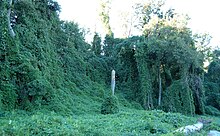Sustainability and environmental management
[3] Management of the Earth's atmosphere involves assessment of all aspects of the carbon cycle to identify opportunities to address human-induced climate change and this has become a major focus of scientific research because of the potential catastrophic effects on biodiversity and human communities.
Ocean circulation patterns have a strong influence on climate and weather and, in turn, the food supply of both humans and other organisms.
[4][5] Management of the global atmosphere now involves assessment of all aspects of the carbon cycle to identify opportunities to address human-induced climate change and this has become a major focus of scientific research because of the potential catastrophic effects on biodiversity and human communities.
Other human impacts on the atmosphere include the air pollution in cities, the pollutants including toxic chemicals like nitrogen oxides, sulphur oxides, volatile organic compounds and airborne particulate matter that produce photochemical smog and acid rain, and the chlorofluorocarbons that degrade the ozone layer.
[6] Ocean circulation patterns have a strong influence on climate and weather and, in turn, the food supply of both humans and other organisms.
[7] Major human environmental impacts occur in the more habitable regions of the ocean fringes – the estuaries, coastline and bays.
Land-use change is fundamental to the operations of the biosphere because alterations in the relative proportions of land dedicated to urbanisation, agriculture, forest, woodland, grassland and pasture have a marked effect on the global water, carbon and nitrogen biogeochemical cycles and this can negatively impact both natural and human systems.
[17] In temperate and boreal regions forest area is gradually increasing (with the exception of Siberia), but deforestation in the tropics is of major concern.
[24] Added to this are the resource-hungry activities of industrial agribusiness – everything from the crop need for irrigation water, synthetic fertilizers and pesticides to the resource costs of food packaging, transport (now a major part of global trade) and retail.
But the list of environmental costs of food production is a long one: topsoil depletion, erosion and conversion to desert from constant tillage of annual crops; overgrazing; salinization; sodification; waterlogging; high levels of fossil fuel use; reliance on inorganic fertilisers and synthetic organic pesticides; reductions in genetic diversity by the mass use of monocultures; water resource depletion; pollution of waterbodies by run-off and groundwater contamination; social problems including the decline of family farms and weakening of rural communities.
[27][28] Current extinction rates are 100 to 1000 times their prehuman levels with more than 10% birds and mammals threatened, about 8% of plants, 5% of fish and more than 20% of freshwater species.
[30][31] The Red List Index also identifies 44 tree species in Central Asia as under threat of extinction due to over-exploitation and human development and threatening the region's forests which are home to more than 300 wild ancestors of modern domesticated fruit and nut cultivars.
[32] In many parts of the industrial world land clearing for agriculture has diminished and here the greatest threat to biodiversity, after climate change, has become the destructive effect of invasive species.




